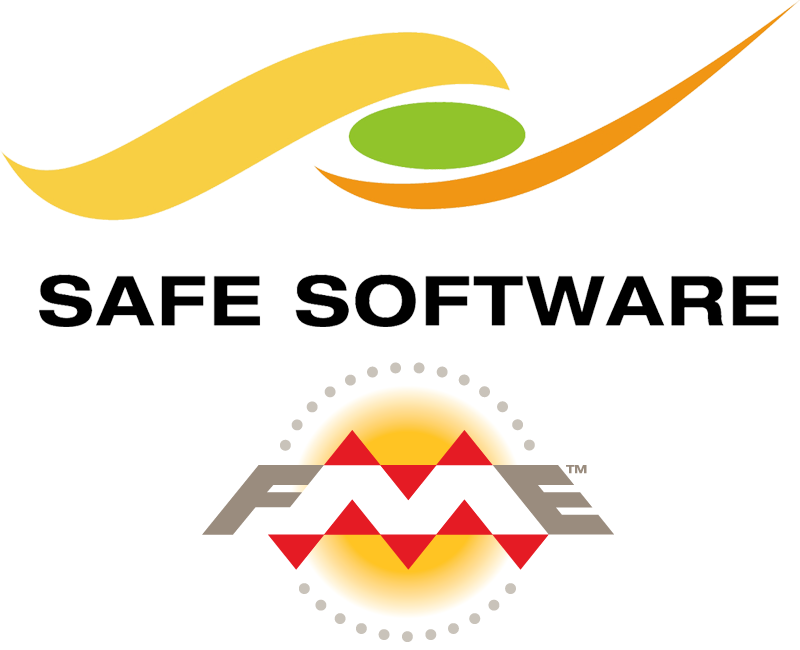This article may reference legacy company names: Continental Mapping, GISinc, or TSG Solutions. These three companies merged in January 2021 to form a new geospatial leader [Axim Geospatial].
The running joke around the office is that FME can do anything – including make dinner! And while that is not completely true, it is certainly a tool that I find myself reaching for more and more often to get my tasks done. My job as a Solutions Engineer with Axim's State and Local Government team is to support our Cityworks users and find solutions to solve their unique challenges. FME is the perfect tool to help me accomplish this!
FME (aka, Feature Manipulation Engine) is produced by Safe Software and it’s every non-developer's dream to automating, integrating, and manipulating data. In a nutshell, FME allows you to read data, do things with it, and then write it all without knowing how to code or program. FME has over 400 different formats that it supports, so integrating multiple applications that use different backend technologies is not a problem. It also boasts over 475 transformers that are used to manipulate and transform the data.
There are two main ways that we use FME to interact with Cityworks - data migration and automation.
Data Migration:
Historical data is my favorite and it seems to come in a variety of flavors! I’ve seen data kept in Excel, Access, FoxPro, PostgreSQL, and SQL, just to name a few. Getting that data into Cityworks to provide a ‘one-stop shop’ when it comes to records is something that FME is perfect for!
The historical data is not always a direct match to the Cityworks schema, so being able to use the FME transformers to manipulate and adjust the data is critical to preparing it to ensure it will fit. The transformers can also be used to QA/QC the data before migrating it into Cityworks. A recent example that comes to mind is the case where a date value was stored in a string field, so depending on the date format that the user who was entering the data preferred, it presented in a variety of ways - 2 digit years vs 4 digit years, 1 digit months vs 2 digit months, etc. Ultimately, I was able to use a FME transformer to manipulate the data so that it fit a standard date format that was easily accepted by Cityworks.
We’ve migrated thousands of records into both Cityworks AMS and PLL, capturing the historical information from Service Requests, Work Orders, Inspections, and Permits. Having all the data in one spot is invaluable when it comes to reviewing maintenance on assets, finding problem areas, and reporting metrics on operations and maintenance programs.
Automation:
Oftentimes we are challenged by our Cityworks users to find solutions for them that are specific to the way they do business or to automate the exchange of information from within Cityworks or from one application to another. FME is a great way to automate these tasks and provide the users with a streamlined process.
Inspection observations are a prime example of ways that we can use FME to automate Cityworks. If the result of an inspection suggests that follow-up work needs to be done, then FME can be used to create the related Work Order based on that result. For example, a hydrant is being inspected and the paint on the hydrant is marked as being in poor condition. FME can be used to read the inspection and make a related Work Order for painting the hydrant. This same principle can be used across all the different components of Cityworks!
Another example that we see often is the use of Esri’s Citizen Problem Reporter to capture Service Requests from the community while leveraging the power of Cityworks and the robust metrics that it can capture on the back end. FME is used to read the data from the Citizen Problem Reporter app which is then translated and written into Cityworks Service Requests for crews to use in their daily operations. This works in reverse also – any Service Requests that are captured in Cityworks can be funneled back into the Citizen Problem Reporter app so the community can see all the current issues that have been reported. FME has a robust set of transformers for reading, writing, and manipulating Esri spatial data, but with the ability to read hundreds of different data formats it could be used with virtually any front-end citizen engagement app.
So while the power of Cityworks and FME falls just slightly short of preparing your Thanksgiving meal, it certainly is the perfect solution for many challenges that we see!
Additional Guidance
We hope this blog on visualizing your Cityworks data has provided some value to you! If you ever need additional Cityworks help, don't hesitate to reach out to the Axim team.





